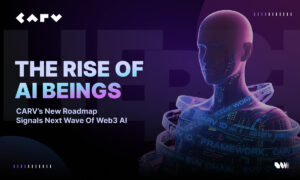In recent years, more and more organizations have decided to adopt cloud technology, primarily due to the obvious advantages it has over the old ways of handling data. However, the process of moving to the cloud raises a few questions, particularly regarding cloud identity governance.
Using traditional methods to eliminate risky entitlements on the cloud is not an option. According to many experts in this field, it is necessary to adopt a CIG software solution to better tackle these challenges in order to protect your customers, employees, and data.
Defining Cloud Identity Governance
In order to better understand cloud identity governance, we need to break it down and split it into two main components:
- Policies and controls are used by the organization to define cloud identities. With them, organizations can manage the access policies in different cloud environments and assign roles for the end-users too. They are also used for logging and access review auditing policies.
- Service administration tools allow the organizations to use specific services like federation and single sign-on to synchronize with existing identity stores. Furthermore, they make provisioning into different service environments easier, especially when it comes to provisioning and de-provisioning tasks. In addition, these tools are also useful for credential and account management, device provisioning and access controls, management of entitlements, and reporting and monitoring dashboards.
There are quite a few different goals that cloud identity governance aims to achieve. Some are universal and apply to every organization:
- Creating and adopting segregation of duties for cloud services and applications.
- Conducting access reviews and monitoring cloud service users in order to make sure that the cloud services are being used appropriately.
- Monitoring for signs of compromised accounts based on malicious behavior and patterns of access.
- Creating and managing role assignments for specific services and requirements.
- Reporting on identity configuration and non-compliance to internal policies.
- Integrating the directories and user entities with application scenarios on the cloud.
Explaining CIG Solutions – Why Use One?
Adopting a CIG solution for your organization can prove to be beneficial in multiple ways. For starters, it will simplify many of the repetitive processes, including tasks like access requests, handling passwords, reset requests, etc. Additionally, it will streamline user provisioning and potentially reduce operating costs.
One of the best features of CIG software solutions is that they offer a large variety of APIs your organization can use to integrate with its cloud services, applications, and workflows. Moreover, they are very easy to configure, so you can start using them from the moment you get them. They don’t require any hardware or complicated infrastructures to be installed for them to do their job.
Last but not least, CIG platforms will provide you with significantly better security controls. With them, you will have an improved command over access management policies associated with authentication, authorization, and provisioning. They will even prove to be valuable when it comes to auditing and compliance reporting.
Finding The Best CIG Solution For You
When looking for the right CIG solution for your organization, there are a few things you need to keep your eyes on. The platform you want needs to fit nicely into complex IT environments. This means that it should support multiple provider APIs and identity roles & policy associations. In an ideal scenario, you need a tool that will be capable of supporting unified management of your cloud and in-house resources.
A great CIG platform is one that will offer you detailed audit logging besides strong authentication and role-based access control capabilities. You can expect to get a wide range of capabilities in access management and provisioning with any CIG tool. Only the best will provide you with the ability to export the audit by logging into the central event management and monitoring platform.
Conclusion
Identity governance can be a challenging task, even more so if you are using cloud-based solutions. Even a single misconfigured cloud infrastructure entitlement can lead to a devastating breach. The traditional methods of eliminating risky entitlements are simply not good enough when it comes to cloud identity governance. This is why the best way to do it is to adopt a cloud identity governance software solution, which will provide you with the needed control to manage access policies and provisioning.



































